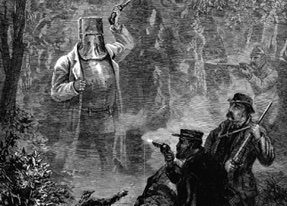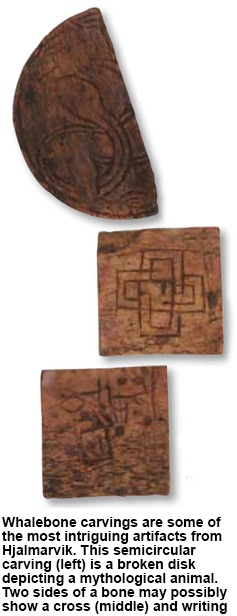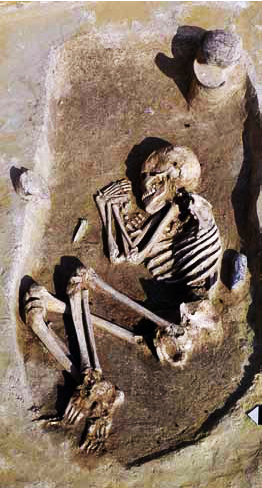
CANADA
Canada: The permafrost of the highest Arctic reaches of the Northwest Territories can make it difficult to inter the dead underground. The Inuvialuit and Inuinnait people of the region buried their dead above ground, covered with large flat stones. Archaeologists have recently documented four examples of these graves dating to either 700 years ago or the 19th century. The graves will be left undisturbed, but nearby sites, including food caches, will be examined to learn more about the cultures that made them.

ENGLAND
England: "Can this cockpit hold/ The vasty fields of France? Or may we cram/ Within this wooden O the very casques/ That did affright the air at Agincourt?" The "wooden O" from the prologue to Shakespeare’s Henry V has been found behind a pub in Shoreditch. There, archaeologists uncovered the remains of the Curtain Theatre, which was home to the bard's theatrical company, the Lord Chamberlain's Men, for two years before the Globe opened. The playhouse likely saw the first performances of Henry V and Romeo and Juliet.

IRELAND
Ireland: While dredging for a wastewater treatment plant on the Cork coast, workers uncovered the previously undocumented wreck of a ship from the 16th or 17th century. While little is known of the ship just yet, marine archaeologists found that it carried an exotic load—seven coconuts, all stamped with an unknown mark. Found amid barrels and fragments of Seville olive jars, the coconuts might have been cargo from the Caribbean or North Africa.

MARYLAND
Maryland: A dinosaur bone at an archaeological site? No, there were no dinos patrolling the Eastern Seaboard 1,000 years ago. Rather, the bone, from an unidentified species, had been collected by Native Americans living at Pig Point, a site with a 10,000-year history, for use as a pot boiler, a heated stone used for cooking purposes. It came from the Arundel Formation, a sandstone deposit that offered up some of the first dinosaur bones to be studied in the 19th century.

LIBYA
Libya: Ten thousand years ago, the Sahara was a far greener place. As it became more arid, people came to rely heavily on livestock, and rock art from the region depicts cattle and even milking. But rock art is hard to date, making it difficult to identify the onset of dairy practices in Africa. New analysis of residues in pots has revealed evidence of milk fat that can be reliably dated to around 7,000 years ago. This early onset of dairy use might help unravel the evolution of the gene that lets many people digest lactose.

ARGENTINA
ARGENTINA: New England whaling fleets scoured the Seven Seas in the 19th century, so it’s no surprise when wrecks of these ships turn up in out-of-the-way places. Off the coast of Puerto Madryn, nautical archaeologists believe they have the wreck of Dolphin, a whaler that went down in the vicinity in 1859. Whalers are known to have visited this area, and in addition to the ship’s wood, researchers found iron try-pots (for boiling blubber) and harpoon heads not far away. —Samir S. Patel

UKRAINE
Ukraine: Different lines of evidence for the earliest domestication of horses have sometimes led to different conclusions. Some models suggest horses were domesticated in a single place, while others suggest that wild horse populations were domesticated independently in various locations. A new study of horse genetics suggests that equines were initially domesticated in one area of the Eurasian steppes, and that domestic herds were then restocked with wild female horses as the practice spread— an intermediate path that reconciles the competing theories.

PAKISTAN
Pakistan: The Indus Valley Civilization, one of the earliest urban cultures, with cities such as Harappa and Mohenjodaro, flourished for 600 years during a climatic "Goldilocks" period—not too wet, not too dry. According to a new study of river and flood deposits, when the civilization first began to grow, around 4,500 years ago, the monsoon rains were declining and flood intensity decreased enough to make intensive agriculture possible. The monsoon continued to weaken over time, and the increasing aridity might have contributed to the abandonment of the great Indus cities around 3,900 years ago.

CAMBODIA
Cambodia: An unknown people in the highlands of the country’s Cardamom Mountains buried their dead on rock ledges—in jars and coffins hand-hewn from logs. Researchers have conducted the first radiocarbon dating on 10 of these mysterious sites, and determined that these burial rites were practiced from at least A.D. 1395 to 1650. This period coincides with the decline of the lowland Kingdom of Angkor. In the lowlands, bodies were primarily cremated, so it is clear that this highland culture was very different from that of the Khmer people below.

MADAGASCAR
Madagascar: For a sailor on a ship in the 17th century, there weren’t many options for getting or receiving messages from other ships or back home. But sailors for the Dutch East India Company used a rudimentary postal system for ships: a series of inscriptions on stones at a beach on tiny Nosy Mangabe Island, under which seamen could leave letters for another ship to pick up and deliver. Experts recently documented these inscriptions and found 40 of them, left by at least 11 different ships.










